Home theater speakers: rating of the best and installation rules
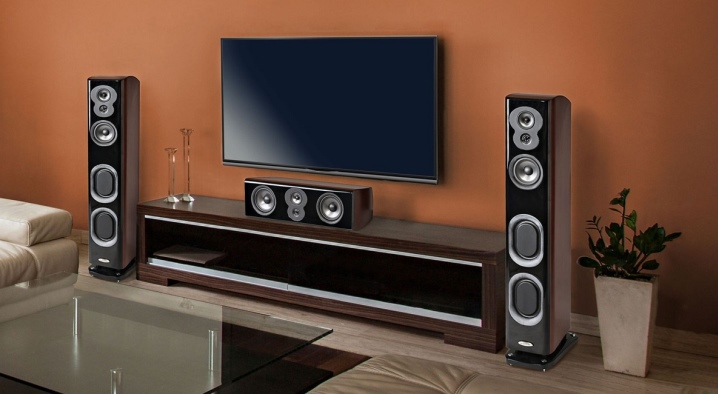
While watching a movie, it is important not only to hear the music, but also the clear sound of the characters' voices, other effects (earthquake roar, wind noise). All modern films are recorded with spatial sound reproduction in mind, so powerful installations such as speakers are required to achieve high-quality sound. It is important not only to choose their components correctly, but also to be able to arrange them around the room, since the usefulness of the sound will depend on this.
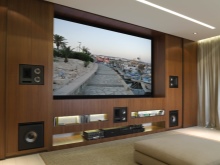

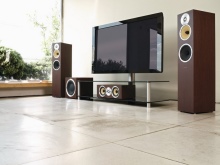
Peculiarities
An integral part of any home theater is acoustics, which includes many speakers for various purposes. The speakers are capable of perfectly transmitting all the special effects and nuances of sound, immersing the viewer in the interesting world of cinema. Home theater speakers can be placed both on the floor (this option is usually chosen for spacious rooms) and mounted on walls (more compact models). The speakers reproduce the sound that they receive from an external source, so they must be connected to computers, TVs or players.
Today, manufacturers produce acoustic systems in several formats:
- 2.0 - sold as a set with two speakers (without a subwoofer);
- 2.1 - are distinguished by the presence of a subwoofer (it provides low frequencies);
- 3.1 - the most common option for a standard home theater, which is represented by three satellites (2 front and 1 center) and a subwoofer;
- 5.1 - a powerful sound system consisting of five speakers and a subwoofer.

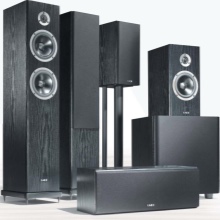
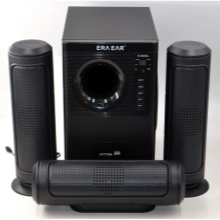
In addition, 7.1 acoustics are also on sale, thanks to which you can create a full-fledged home theater.
Since the system consists of a subwoofer and 7 speakers, the price is high.

Species overview
The speaker system is produced with a special power amplifier, which can be built-in or separately connected. Depending on this, it is divided into two main types.
- Active (equipped with an amplifier). Its main advantage is considered compactness and versatility, in addition, an active audio system fits freely in a small space.
- Passive (does not have a built-in amplifier). The advantage of such equipment is that you can independently select an amplifier for it at your discretion.
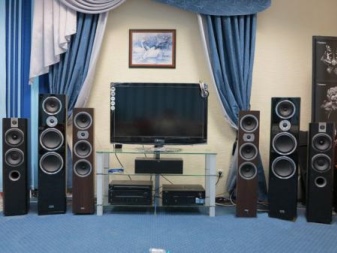
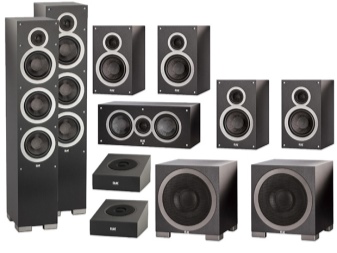
Besides, on sale you can find open and closed system, the last of which is considered the most common and simple. It has a center channel and columns without holes. The sound in such acoustics is a little muffled, since the air is in a closed volume. Acoustics of this type are usually chosen by lovers of low-frequency sound.
As for open system, then its casing is leaking, since there is no wall on the back of the speakers. Thanks to this design, high-quality sound with high and low frequencies can be obtained.
It is well suited for listening to both live performance and classical chamber music.
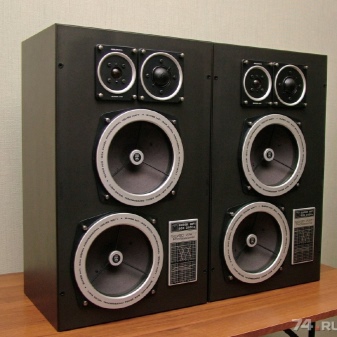
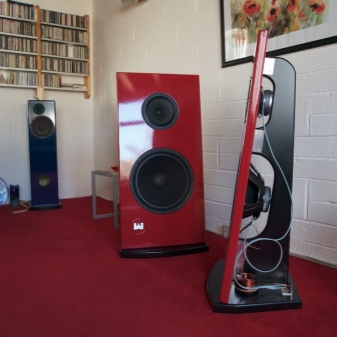
By location type
Depending on the location, the speaker system is divided into center, front and rear. Center speakers are placed opposite the viewer (above or below the TV) and are used to build surround sound in a multichannel system.Front speakers are located in front of the viewer, but they must be installed either symmetrically to each other in different directions or at the corners of the room. Thanks to the front acoustics, the main sound is created, so when choosing speakers of this type, you cannot save.
Rear speakers are usually positioned behind the viewer, with the speaker facing the wall to bounce sound off the surface. Such speakers are needed in order to create a visual picture of the sound environment.
The subwoofer can be placed anywhere in the room, but it is advisable to do this in front of the viewer (near or under the TV set).
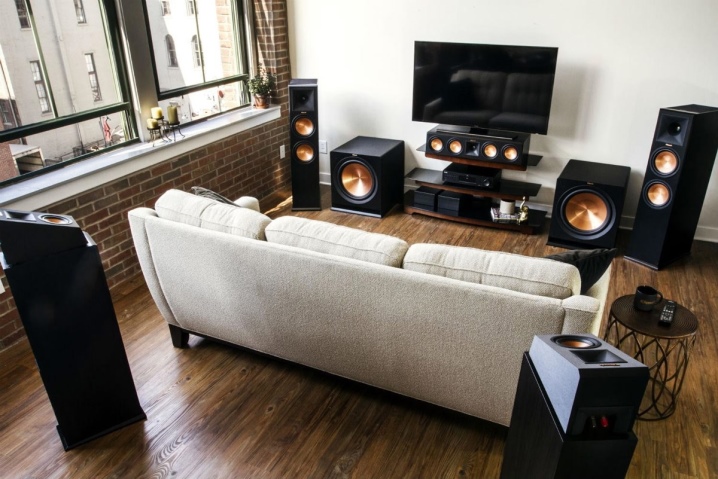
By installation method
The speakers of the acoustic system differ in the way of installation, they are ceiling, floor and recessed into the wall or ceiling. Wall-mounted equipment is considered the most budgetary; it is often chosen for small rooms. For spacious rooms, floor-standing speakers are ideal, they are easy to set up and assemble, but such designs do not provide height adjustment, which can degrade the sound quality.
The built-in acoustics also deserve special attention; they are distinguished by the highest sound quality. Its principle of operation is as follows: a sound wave from one of the speakers moves directly to the viewer, and the second - back to the wall, where it is reflected and immediately returns. The result is the perfect sound.
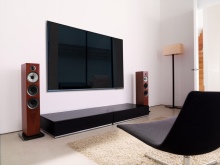
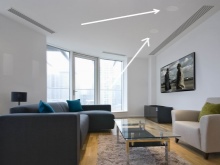
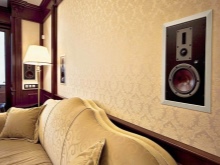
Rating of the best models
Today, home theater speaker systems are represented by a huge selection of models, each of which differs not only in design features, performance characteristics, but also in manufacturer and price.
The most popular models that have proven themselves well on the market include those presented below.
- Wharfedale Movie Star DX-1 (United Kingdom). This is a 5-in-1 speaker system that comes with two rear, two front and one ceiling-type center speakers. Additionally, the equipment is equipped with a subwoofer, the power of which is 150 W, and the frequency range ranges from 30 to 20,000 Hz. The body of all components of the system is made of MDF. The acoustics are available in two color options - white and black.
It is not only great for watching movies, but also harmoniously fits into the modern interior of the room.

- Bose acoustimass 10 (USA). It has a compact size and is able to output surround sound, as it is equipped with a powerful subwoofer bass (200 W). This model is usually chosen by music lovers and provides high quality sound in both small and large rooms. The manufacturer equips the system with central, front and rear speakers that are installed on the ceiling.
The speaker cabinet is sleek and all cables are numbered for easy installation.
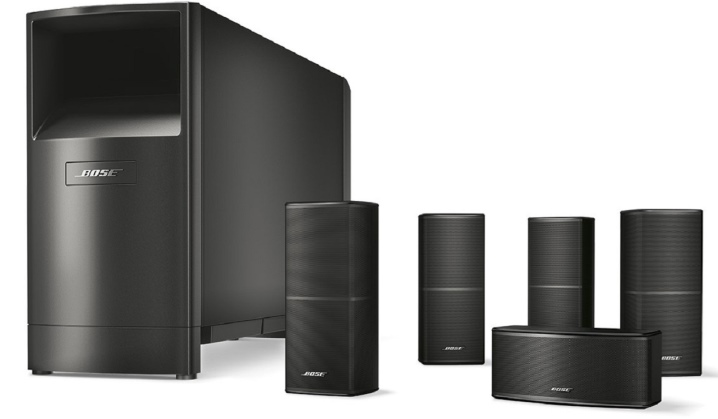
- Kef T205 (United Kingdom). The English manufacturer produces this model in an aluminum case, so it looks stylish. Thanks to its excellent bass, the equipment is able to provide surround clear sound. The speakers can be placed on the floor or mounted on walls.
The device is suitable for listening to music and watching movies.
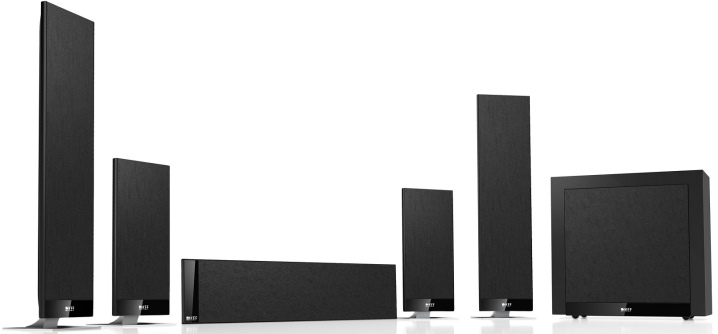
How to choose?
Before purchasing a set of speaker systems, you need to make the right choice in favor of a particular model, taking into account many nuances.
Experts recommend paying attention to certain indicators.
- Power... If the set of acoustics consists only of passive speakers that do not have a built-in amplifier, then they must have a rated power for connecting external amplifiers. This indicator indicates how long the system is able to work without damaging the equipment. To select the power, it is necessary to take into account the area of the room where it is planned to install the acoustics. So, for example, for premises up to 17 sq. m, a system with a capacity of 60 to 80 W is suitable, and for an area of 20 to 30 sq. m - 150 W.
- Sensitivity... This indicator indicates the sound pressure that the equipment is capable of developing at a frequency of 1000 Hz with a power of 1 W. It is measured in decibels. Most manufacturers produce systems with a sensitivity of 84 to 102 dB. The higher the acoustics sensitivity, the better and louder its sound.
- Frequency response... It is a graph that shows the dependence of the sound pressure generated by the acoustics on the frequency of the reproduced signal. This indicator should not exceed 250 Hz.
- Body material... Now on sale you can find acoustics in both durable aluminum and plastic cases. But the most ideal is the wooden version, it is of high quality and reliability in operation.
- Column sizes... They are selected depending on the installation location. So, for listening to music on a computer, mini-audio systems are suitable, and for home theaters - larger models that are placed on the floor.
- Connection... Speakers must have connectors for connecting to headphones, PC sound card, TV and other types of equipment. It is best to choose devices with a USB connector and Bluetooth connectivity.
- Appearance... The design of the speaker system plays a huge role, since it is not purchased for a home theater for a day.
Therefore, it is necessary to choose stylish models that would be in harmony with the very technique and the interior of the room.
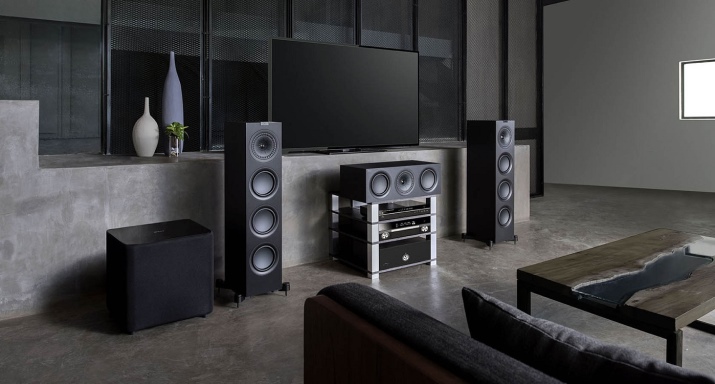
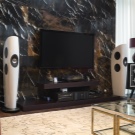
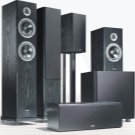

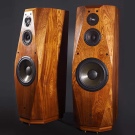
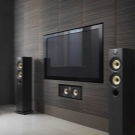
Special attention should be paid to the choice of speakers for the center channel, since they provide high-quality sound and are responsible not only for the reproduction of dialogues, but also for their intelligibility.
Experts recommend giving preference to the following models: Emotiva Airmotiv C1, Monitor Audio Silver C150, Acoustic Energy AE307.

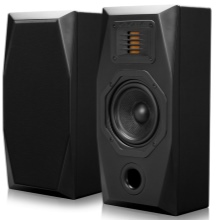
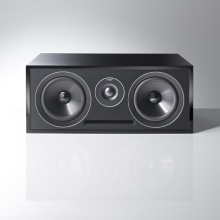
Placement and connection
The sound of your home theater speakers depends a lot on how they are placed correctly in the room. If you correctly arrange all the components of the speaker system, you can get an amazing effect from watching movies or listening to music.
The placement must be done in a certain way.
- Front right and left channels... The tweeters should be placed at ear level for the seated viewer. At the same time, we must not forget about the angle of the speakers, which are slightly directed towards the TV. The distance of the speakers from the wall is determined as follows: the closer they are to its surface, the better the bass will be amplified. You can also hang the speakers at different heights by choosing the desired position.
- Center channel speakers... Many models have multichannel speakers from top to bottom or vertically. If you choose the correct height for their installation, then there will be no problems with the sound, but when the drivers are placed horizontally, then sound overlaps between the tweeter and the subwoofer are possible. Therefore, the center channel should be set slightly higher or lower from the TV in a strictly straight line.
- Surround speakers... They can be placed either on special stands or simply attached to the wall. For 5.1 speaker systems, the best placement of the speakers is considered to be to the left and right of the viewer at a height of 30-60 cm from the level of the ears of the seated person. For 7.1 systems, it is recommended to install the speakers next to or behind the viewer's seat.
- Subwoofer... For this device, you can choose any convenient location, away from the wall, since next to it the subwoofer will generate low frequencies. Some people prefer to mount the subwoofer at the front of the room, this will make it easy to connect to the AV Reverse.

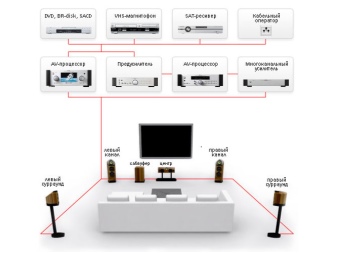
After the issue has been resolved with the location of the components of the speaker system, it remains only to make the connection, check the sound and hide the wires.
The TV is connected to the home theater through a special plug.Since the connectors in each TV model may differ, you need to buy a separate cable with a composite connector or with an HDMI output. In addition, a surge protector must be included in the system. The connection process is described below.
- To the TV... The yellow plug located on the rear reverse panel connects to the LCD plasma TV socket. After that, the S-Video cables are connected in the same way, the green, red and blue plugs are installed in the corresponding inputs. If you need to connect an HDMI cable, then it is recommended to focus on the marking. Then tuning is carried out, for this you need to turn on all the speakers, if everything is done correctly, then you can hear amazing sound.
- To the computer... To connect the speaker system to a computer, creating a home theater, you should use a special cable, at one end of which there is a mini-jack input, and at the other - a tulip plug. The connection is made through the green port, the "tulip" connector must be inserted into the video player, and the "mini-jack" - into the system unit. Thanks to this scheme, the player will amplify the sound in 5.1 or 7.1 format. A passive subwoofer, speakers are connected separately, and the sound card is adjusted to balance the sound. The installation is completed by configuring the video card.
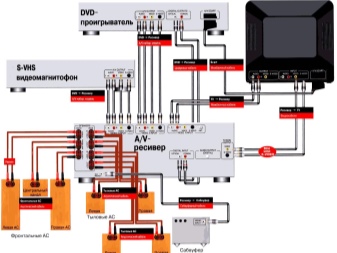

An overview of the 5.0 Yamaha NS-F160 + NS-P160 speaker set for home theater is in the next video.













The comment was sent successfully.